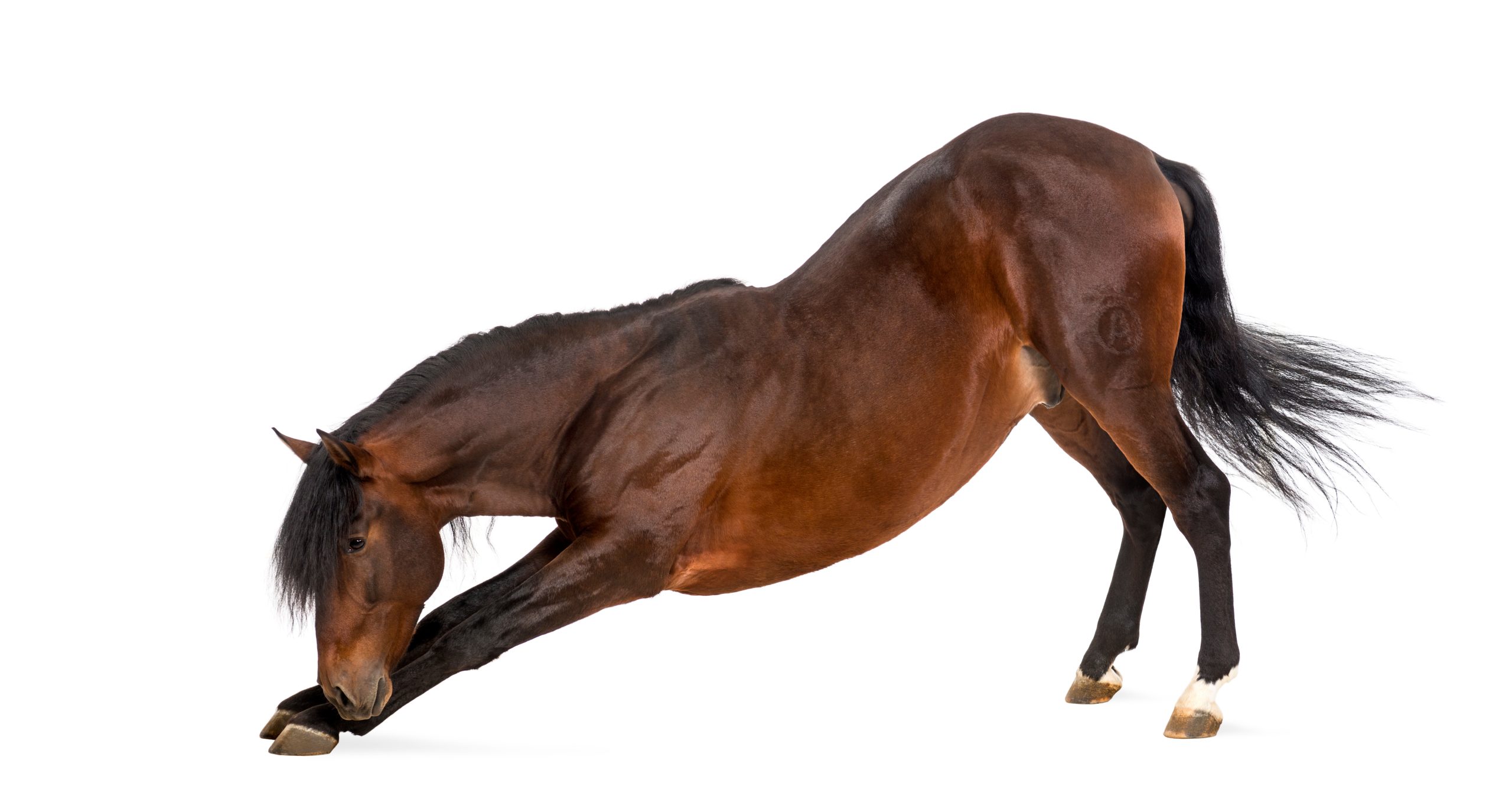Have you ever wondered what else you could do for your horse that didn’t require a lot of time and was very beneficial? Often our horses are stabled to keep them safe and so they only get out for a limited amount of time. Whether your horse lives in a pasture with others or is a show horse that is stabled, these simple stretches can keep your horse ridable until his 30’s. The top 4 stretches I recommend to my clients are carrot stretches, belly lifts, tail pulls and butt tucks.
The most common one used is carrot stretches. There are several different stretches you can do with carrots or other treats, but I like to focus on one in particular. This one is a chin-to-stifle (flank) stretch. Using a carrot stand near the flank and encourage the horse to reach toward its side, just behind the ribcage. Nose to stifle. The purpose is to stretch the deep lateral neck and ribcage. Only go as far as the horse can reach without imbalance and tension. If your horse tries to turn around because he doesn’t understand, then stand at their shoulder facing away from them and using the carrot , allow them to wrap their neck around you reaching for the carrot along the ribcage. This stretch improves flexibility in the neck, shoulders, and back. It also enhances core strength and posture. It keeps muscles supple to prevent injury and encourages body awareness and relaxation. This also strengthens the bond and trust between horse and handler.
The second stretch is Belly Lifts. Super easy and favorite of mine. Position yourself beside your horse, just behind the front legs and stand close. Using your fingers with an “ichy-stratchy” motion find the right spot along the midline of the belly, just behind the girth area. Gently press and stroke upward along the midline. Start with light pressure and gradually increase if needed, moving slowly along the belly looking for a response. The proper response is when the horse lifts its back. You will see the withers lift. Hold for 5-10 seconds, then release. Do 2-3 lifts per side. Belly lifts help strengthen the core and back muscles, which support the spine. They encourage self-carriage and improve posture by correcting hollow-backed tendencies. They also support rehabilitation for back soreness, kissing spine, or poor saddle fit.
Third is Tail Pulls. A gentle and effective way to mobilize the spine, relieve tension, and build strength and balance in a horse’s core and hindquarters. This stretch works by applying steady traction to the horse’s tail, encouraging engagement of the deep postural muscles. Only do so if you feel safe standing around your horses’ hindquarters. This stretch is best done after light exercise or once the horse is warmed up. Stand safely to the side of the hindquarters letting the horse know you are there by placing your hand on the dock of his tail. Gently hold the base of the tail and slowly apply steady, straight-line pressure directly down and backward following the spine. The pull should be firm but gentle, not jerky or forceful. Hold for 10-30 seconds depending on the horse’s comfort. Watch for signs of relaxation: soft eyes, licking and chewing, gentle shifting of weight. Release slowly and calmly. This stretch engages the deep core muscles and mobilizes the sacroiliac joint and lumbar spine. It relieves tension in the back, pelvis, and haunches. It can reduce stiffness in horses with SI joint issues or hind-end weakness. And it overall encourages relaxation through the parasympathetic nervous system. DO NOT perform tail pulls on horses with recent spinal or pelvic injury, tail fractures or soreness, or neurological disorders unless they are cleared by a vet.
Lastly, are the butt tucks, also called pelvic tilts or lumbar lifts. This is a gentle technique used to activate a horse’s core and abdominal muscles while encouraging flexion and lift of the pelvis and lower back. This stretch supports spinal mobility, improves posture, and strengthens a horse’s topline. You are going to stimulate a reflex point on the horse’s hindquarters to encourage it to tuck the pelvis under and engage its abdominal muscles. Stand safely behind the horse’s hindleg, off to the side. The reflex point is a “hands width” distance from the base of the tail. Using the “itchy-scratchy” method, push down and up until the horse tucks his pelvis. You can do both sides at the same time or just one at a time. Whatever you feel comfortable with. Hold this for 5 to 10 seconds then release. Repeat 2-3 times. Just like the Belly Lifts. Never “surprise” the horse by doing these. Always let them know where you are standing and start with gentle pressure, moving to more pressure for a deeper stretch.
Do all these stretches slowly and gently, never force a position. Watch for signs of discomfort or resistance. If your horse is resistant to the belly lifts for example, then that is a sign that they will also have a hard time using their core while you ride them. Keep the sessions short and consistent. Always use calm, consistent pressure. Never poke or jab. You can do them before saddling up or after untacking. A few times a week is ideal. Combining carrot stretches, belly lifts, tail pulls, and butt tucks are an excellent part of whole-body stretching and strengthening. You can mix and match these throughout the week. Have fun with it and your horse will thank you.

